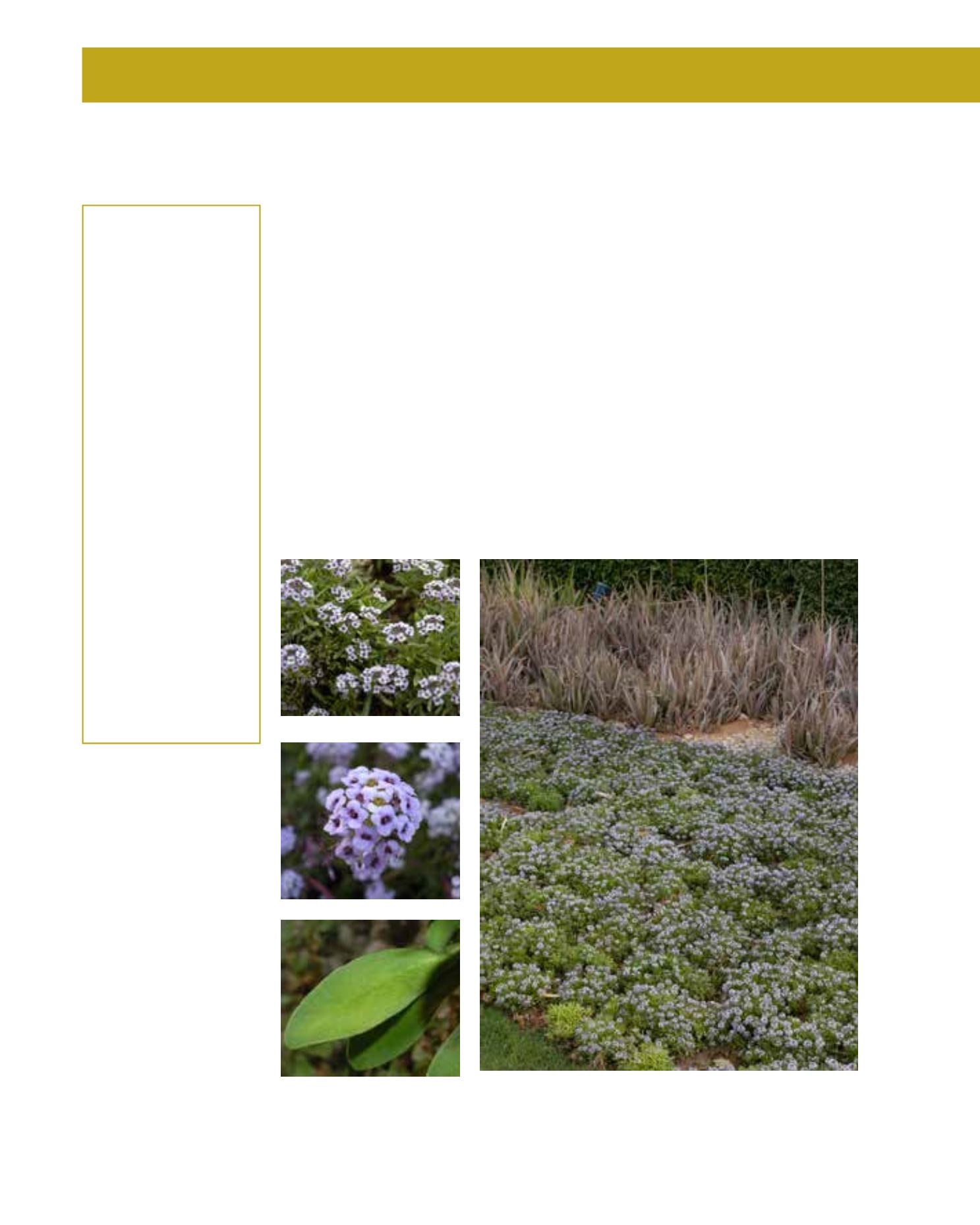

GENERAL
Origin
:
Mediterranean,
temperate
Vigour
:
fast growing
Humidity
:
semi-arid, semi-
humid
Propagation :
sowing and
pricking out
Maintenance :
moderate
CONDITIONS
Urban climate :
resistant
Dessication :
vulnerable
Stagnant water :
vulnerable
Irrigation
:
high
Salinity/ppm :
high (3500 ppm)
Hardiness
:
-3°C
SHAPE
Type
:
annual, perennial
Height
:
0.05 m-0.15 m
Spread
:
0.15 m-0.3 m
Foliage
:
evergreen
FLOWER
Colour
:
white, lilac, violet
Period
:
January - May
Smell
:
scented, strong,
gives freely of
its scent, flower,
sweet
FRUIT
Type of fruit :
silique
Fruit size
:
0.3 cm
Sweet Alyssum is a short-lived perennial native to the Mediterranean Basin and the Canary
Islands. The generic name refers to the small seedpods, while maritima shows its preference
for a maritime climate. It grows about 15 cm high forming lacy mats some 30 cm across. The
lanceolate leaves are evergreen making the background for protruding terminal clusters of white
inflorescences. They have four petals, as typical for the mustard family. Cultivars often produce
flowers in lilac or violet for a long period of time. The flowers emit a very pleasant scent which
attracts insects. After flowering, the plants should be cut back to restart their floral display. In
containers, they make an impressive effect, spelling over the rim. They may be used for massed
planting or edging and can cover empty ground wherever there is enough light. They tolerate
full or partial sun and demand a well-drained soil. Other than these, the reliable Sweet Alyssum
has no further particular requirements. Heat is tolerated, as are low temperatures, and irrigation
may be done with some level of salt. The plant thrives even in crevices, still producing flowers in
abundance. However, it also responds well to frequent watering and fertilising with slow-release
granules. Sowing on site is possible in autumn, but more often plants are started in pots. After
transplanting, it should be given some attention until it becomes established. In suitable locations,
it may self-seed. It is most often seen in Arriyadh as part of a winter colour display on road verges.
193
Lobularia maritima,
Brassicaceae
Sweet Alyssum
















